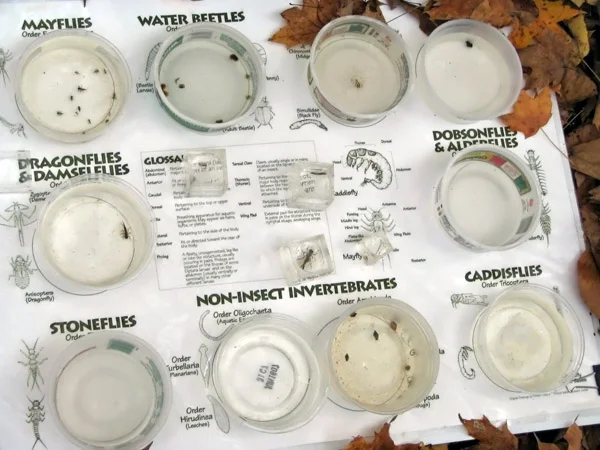Advanced Stream Explorations - Recommended for Grades 9 - 12
Recommended for 9th through 12th grade students. A full day immersion into freshwater stream ecology. Students will spend the morning at the East Branch of the Perkiomen Creek where they will measure a variety of physical and chemical properties of the stream and a conduct a macoinvertebrate survey to determine stream health. An afternoon TeachCam session affords students the opportunity to view macroinvertebrates collected in the creek larger than life while learning more about their life cycles, niche, and role as indicators of stream health. Students will also engage in hands-on activities to learn more about point and non-point source pollution and best management practices and examine a real life event and its effects on the Perkiomen creek.
Fee: $16 per student ($160 minimum fee). One free adult chaperone for every five students.
Contact: PWC Education Department at education@perkiomenwatershed.org
PDE Academic Standards covered by this program include:
4.2.6.A - Identify the five major watersheds of Pennsylvania.
4.2.7.A - Explain how water enters, moves through, and leaves a watershed. Explain the concept of stream order. Describe factors that affect the flow and water quality within a watershed
4.2.7.B - Explain the primary functions of a wetland within a watershed. Providing habitat, flood control, water purification. Serving as buffer zones, wildlife propagation areas, and food and fiber systems.
4.2.8.A - Describe factors that affect the quality of ground and surface waters.
4.2.8.C - Describe how a diversity index is used to assess water quality.
3.1.10.A3 - Compare and contrast the life cycles of different organisms.
4.1.10.D - Research practices that impact biodiversity in specific ecosystems.
4.2.10.A - Examine the interactions between abiotic and biotic factors within a watershed. Describe how topography influences the flow of water in a watershed. Describe how vegetation affects water runoff. Investigate and analyze the effects of land use on the quality of water in a watershed.
4.2.10.B - Examine how human interactions impact wetlands and their surrounding environments. Describe how land use decisions affect wetlands.
4.2.10.C - Explain the relationship between water quality and the diversity of life in a freshwater ecosystem.
4.5.10.C - Analyze real-world data and explain how point and non-point source pollution can be detected and eliminated.
4.1.12.A - Analyze the significance of biological diversity in an ecosystem.
4.1.12.E - Research solutions addressing human impacts on ecosystems over time.






